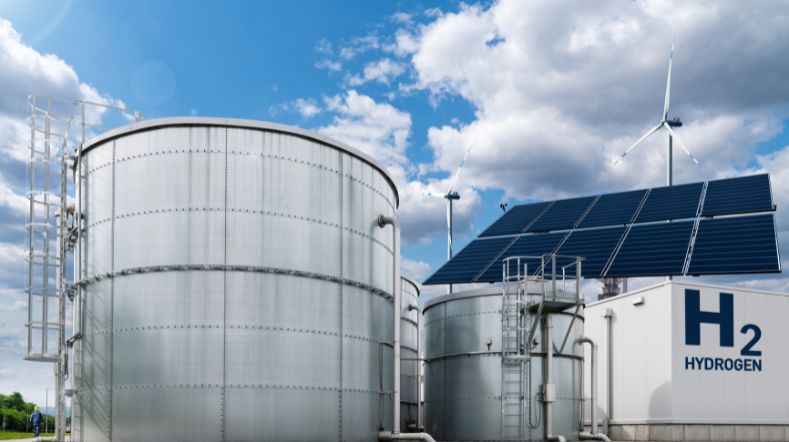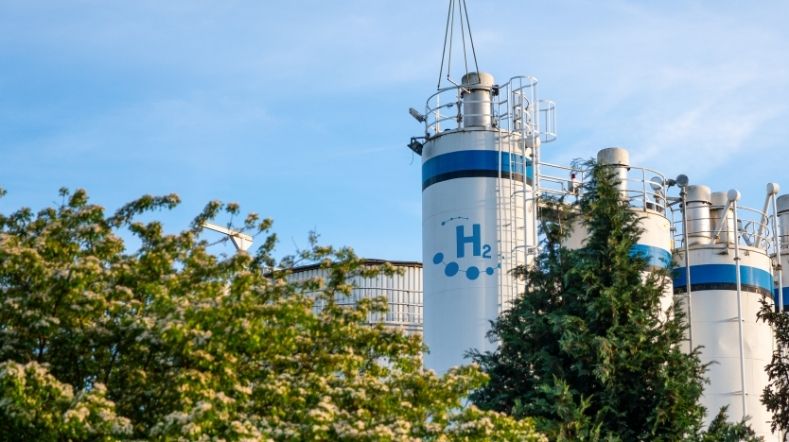Dutch consortium participates in EU research project on large-scale hydrogen storage in depleted gas fields
In the future energy system, which is primarily going to rely on wind and solar power, large-scale underground hydrogen storage will be essential to ensure the stability of the system. TNO, Energie Beheer Nederland (EBN) and Shell are participating in the European research project ‘EUH2STARS’ (European Underground Hydrogen Storage Reference System).
EUH2STARS
In this project they work together with organisations from Austria, Spain and Hungary to demonstrate that hydrogen can be safely, reliably and affordably stored in depleted gas fields. The EUH2STARS research project, for which the European Union has granted the consortium €20 million subsidy, is led by RAG Austria and focuses, among others, on the technical and societal aspects of underground hydrogen storage in depleted gas fields.
Large-scale underground hydrogen storage essential for energy system
In the future energy system, the amount of wind and solar energy produced in the Netherlands and elsewhere in Europe will vary from day to day and over the seasons. Bastiaan Jaarsma, project leader underground hydrogen storage at EBN: ‘In addition to import and demand-side management, large-scale underground hydrogen storage will be necessary to balance fluctuations in supply and demand.
This makes hydrogen storage essential not only for system stability, but also for the industry's transition to sustainable energy carriers.’ The Dutch government, in it’s recently published ‘Energy Storage Roadmap’, also refers to large-scale underground hydrogen storage as an important and necessary technology to be scaled up in the Netherlands from 2030.
Larger storage volume
Hydrogen can be stored underground in salt caverns - cavities created by salt mining - and in depleted natural gas fields. Currently, steps are undertaken towards the development of four salt caverns for underground hydrogen storage in the northeast of the Netherlands.
However, once large-volume hydrogen production in the Netherlands and northwest Europe really gets going, the anticipated storage need will be many times higher. As depleted gas fields have a much larger storage capacity, and are already connected to existing infrastructure, hydrogen storage in depleted gas fields is a promising addition to storage in salt caverns.

'Through this project we can develop, exchange and share, together with experts from Austria, Spain and Hungary, knowledge and experience across national borders.'
Across national borders
The EUH2STARS project, which runs until 2030, is going to make a significant contribution to the further development of hydrogen storage in depleted gas fields. Remco Groenenberg, scientific lead underground hydrogen storage at TNO: ‘Within EUH2STARS, experience is being gained with hydrogen storage in a depleted gas field together with a large number of European parties under the leadership of RAG Austria.
RAG recently completed a successful small-scale pilot with hydrogen storage in a depleted gas field, and in EUH2STARS we are now taking an important next step towards commercial-scale application. Through this project we can develop, exchange and share, together with experts from Austria, Spain and Hungary, knowledge and experience across national borders in the coming years.
In this way, we gain important knowledge and insights on aspects related to technology, sustainability and societal embedding with which we can support the Dutch government and emerging hydrogen market on the safe, sustainable, and timely development of hydrogen storage in depleted gas fields in the Netherlands.’
Get inspired
Hydrogen in the energy system: The future of sustainable energy in the Netherlands and Europe


Underground hydrogen storage


HY3+: ensuring security of supply of hydrogen network with neighbouring countries


Storage and transport of hydrogen


